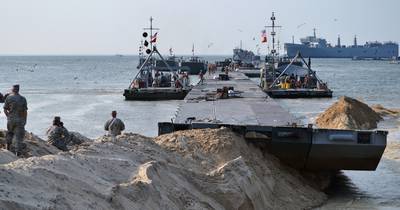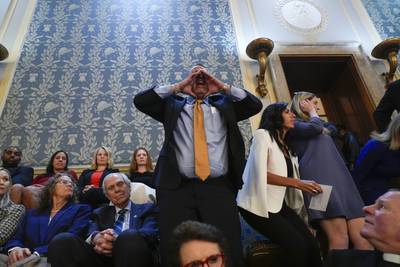WASHINGTON — Before Gen. Eric Smith first walked the Pentagon’s E ring as a top Marine Corps leader, the career infantry Marine led forces in Iraq, Afghanistan, Africa, South America and the Pacific.
And beginning in summer 2019, as the deputy commandant for combat development and integration, he started working with Commandant Gen. David Berger on a plan to transform the Marine Corps.
In that role, and then as the No. 2 Marine, he helped draft blueprints for a complete overhaul of the service ― known as Force Design 2030 ― with the goal of turning a Corps shaped by two decades of land wars into one able to compete against Chinese forces in particular.
Now, he could carry on the Corps’ transformational trajectory.
The White House nominated Smith to serve as the next commandant of the Marine Corps, ensuring stability for the force modernization vision that Smith himself helped craft.
The Biden administration sent its pick to Congress Tuesday, according to a congressional website.

Several of Smith’s former colleagues described the general as a personable, down-to-earth leader who cares deeply about the Marines under his command.
Maj. Gen. Benjamin Watson, the commanding general of 1st Marine Division, said, “Gen. Eric Smith is an extraordinarily positive and engaged leader, with an emotional IQ well above the average.”
“I found him to be one of the most supportive bosses I’ve ever had.”
From Texas to the Pentagon
Smith was born in Kansas City, Missouri, and raised in Plano, Texas, according to his official Marine Corps biography. Even now, he often makes reference to his Texas upbringing, and he is a fan of the Texas Rangers and country music.
He attended Texas A&M University — a public school with a strong emphasis on preparing military officers — on a Navy ROTC scholarship, following in the footsteps of his older brother.
In August 1984, in the first days of Smith’s sophomore year, a new member of the university’s Corps of Cadets, Bruce Goodrich, died after three juniors hazed him for an hour in the hot Texas weather. The tragedy stunned the campus.
While there’s no public record of Smith discussing Goodrich’s death, it’s an event that would have shaped his experience at the university and his formative years as a midshipman.
As a senior, Smith served as the commander of the Fightin’ Texas Aggie Band, a precise marching band made up of the university’s Corps of Cadets, according to the university’s yearbook.
He met his wife, Trish, on a blind date at the football stadium, according to a profile on the Texas A&M fundraising foundation’s website.
After receiving his commission in 1987, Smith became an infantry officer — a path that most commandants have taken. He served in Operation Desert Shield and Desert Storm before returning to his alma mater as an NROTC instructor, Marine Corps Times previously reported.
He has made several other deployments: to Liberia and Venezuela early in his career, to Iraq twice and to Afghanistan for a one-year deployment.
On his first deployment to Iraq, he was shot at least once, in the leg while moving from one base to another, he told NBC News in 2005.
But, as he prepared for a second deployment to Iraq, he told the interviewer he was more concerned about maintaining the Corps’ legacy than about getting shot at again.
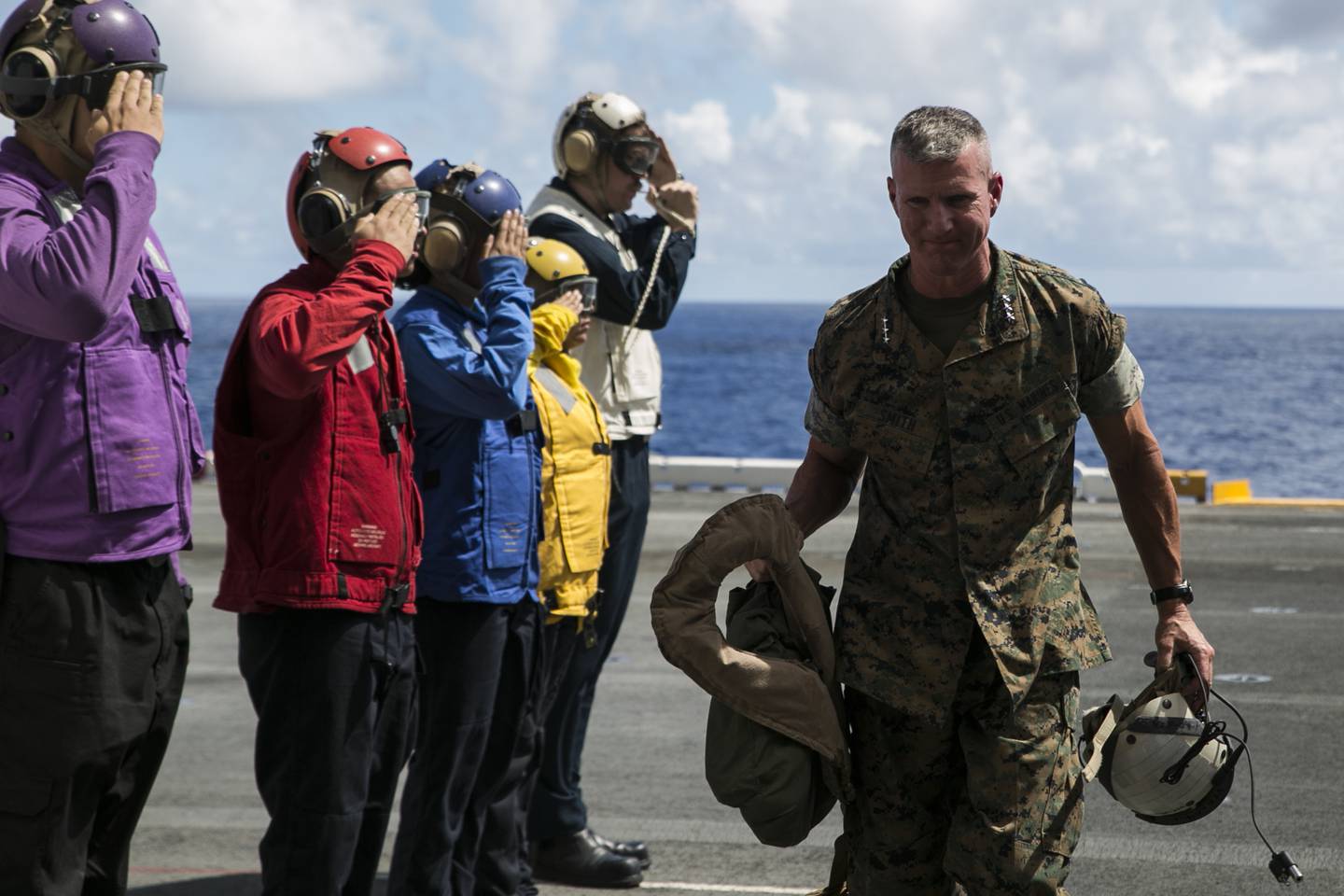
“We have a saying that the Marine Corps is like a little glass Christmas ornament, if you will,” he said. “You can drop it, but only once. Once it’s gone, it’s gone.”
“And the people who built the legacy that we live on, this eagle, globe and anchor, from Iwo Jima, they’re gone,” he continued. “You can’t apologize to them for soiling the reputation of the Marine Corps.”
As a general officer, Smith went on to lead Marine Corps Forces Southern Command, in 2015; 1st Marine Division, from 2017–2018; and III Marine Expeditionary Force, from 2018–2019.
He also had stints as the senior military adviser to the defense secretary and as the assistant deputy commandant for plans, policies and operations.
Retired Marine Col. Robert Work, a former deputy secretary of defense who worked closely with Smith when the general served as Work’s senior military adviser nearly a decade ago, said, “Eric Smith is the consummate professional: Intelligent, knowledgeable, empathetic and civil.”
“He was unafraid to tell me when I was about to do something wrong or had done something wrong,” Work said.
Force Design 2030
As the commander of III Marine Expeditionary Force, headquartered in Okinawa, Japan, Smith got a first-hand look at the forces at the heart of the Corps’ Force Design modernization.
The Force Design 2030 overhaul started with a basic premise: China is the United States’ pacing threat and is making great strides in boosting its maritime forces.
If the Marine Corps, itself a maritime force, wanted to play a role in deterring China, the Corps needed to reshape itself.
Smith played an integral part in the plan’s development and early execution while serving as deputy commandant for combat development and integration.
RELATED
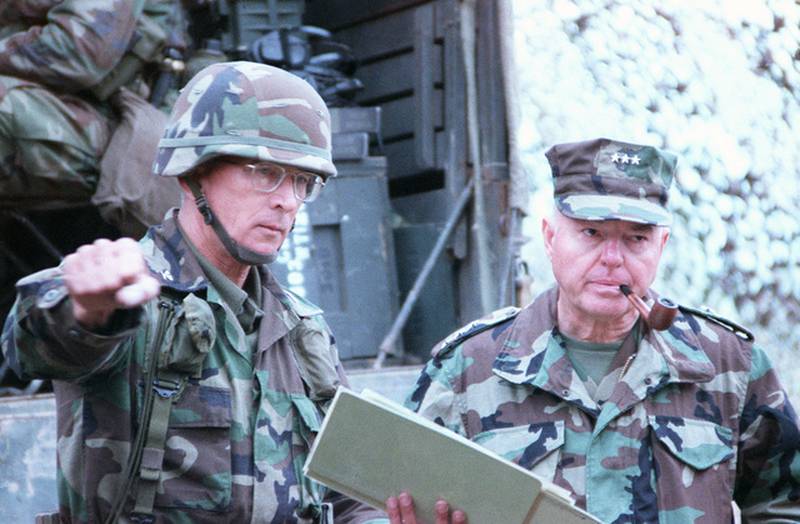
As part of Force Design 2030, the Corps has made changes, such as shedding heavy gear like tanks, upgrading to longer-range weapons, building a web of sensors, empowering small unit leaders, investing in the lift and logistics to support distributed operations, and more.
Though Force Design 2030 generally has found acceptance at the top levels of the Defense Department and in Congress, it sparked an extraordinary — and public — backlash from retired Marine leaders.
Several retired generals penned opinion essays decrying Force Design and urging the Marine Corps and Congress to halt the overhaul, which they said would leave the service less prepared to confront a range of crises.
Despite the criticism, Berger repeatedly has said that classified intelligence supports the direction the force is moving in. The ascension of his No. 2, Smith, to the No. 1 job in the Corps would confirm the service will continue on that path.
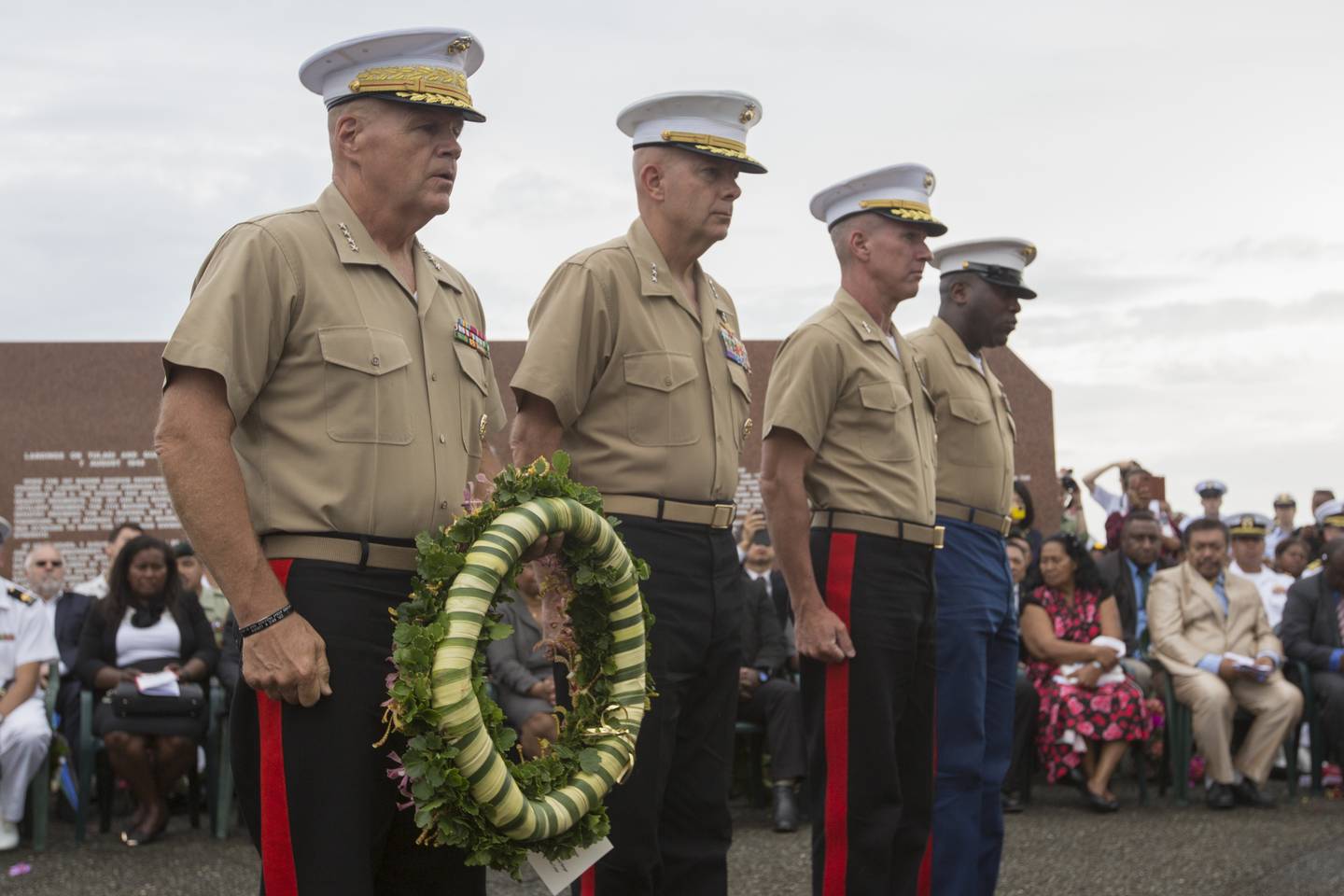
Despite the inherent complexity of the Force Design effort, Smith often simplifies the message with his signature Texas anecdotes.
In a panel discussion at the Navy League’s Sea Air Space conference in April, Smith compared the lack of deployed Marine expeditionary units on amphibious ships to the lack of security at his hometown convenience store.
Smith spoke of the Mr. Ed food store that he and his brothers would visit, which had a sign in the window that read, “This establishment is protected by an armed security guard three nights a week. You guess which three.”
“Sounds like Texas bravado,” Smith said. “It sounded like deterrence — I didn’t know what deterrence was then, but the older I got, though, and in my current job, I realize that’s not deterrence, that’s an invitation, because that’s four nights a week” without protection.
Smith has spoken repeatedly about the need to maintain a fleet of at least 31 amphibious ships, and the fight over the future of that ship fleet would certainly follow Smith into the commandant’s seat.
During the Ash Carter Exchange on Innovation and National Security May 9, Smith was asked to preview what else was upcoming for Force Design 2030 — items he himself would oversee if confirmed as the next commandant.

He spoke of standing up a second Marine littoral regiment, a new kind of unit that emphasizes Force Design principles, which will be based in Japan. He also mentioned increasing the number of Navy Marine Expeditionary Ship Interdiction System anti-ship missile batteries, and fielding loitering munitions, or suicide drones, to make distributed forces more lethal and survivable.
Asked if he was worried about the success of Force Design 2030 once its chief architect retires, Smith said no.
“It’s fact-based and threat-informed,” he said.
Watson noted Smith was “the quarterback behind the initial implementation of Force Design 2030″ but also “has also been the driver behind the wargaming, experimentation and analysis that has led the Corps to Force Design 2030 refinements over time.”
Smith’s ‘No. 1 priority’
Smith also has made a name for himself in the way he’s cared for Marines, his former senior enlisted advisers said.
Soon after Smith took command of III Marine Expeditionary Force, he tasked Sgt. Maj. Mario Marquez with improving the quality of life for troops and their families.
The changes to long-standing policies that Smith made as part of this effort boosted morale, said Marquez, who is now retired.
The general loosened restrictions on how late Marines could stay out after work, he made it easier for junior enlisted Marines to get authorization to drive, and he drove changes that made it cheaper for families to move to and from Okinawa, Japan.
“Taking care of people is his No. 1 priority and always has been,” Marquez said.
The retired sergeant major said he believed Smith, if confirmed, would bring that attitude and focus to the Corps’ top job.
Even as Smith made some rules more lax as the head of III Marine Expeditionary Force, he still cared deeply about discipline, according to Marquez.
“Customs, courtesies and iron-clad discipline is what keeps you alive on the battlefield,” Smith said on the BruteCast podcast in August 2022.
Smith himself previously has spoken about the importance of looking out for the men and women he leads.
In a November 2018 Marine article, a Marine asked the then-commanding general which superpower he’d want to have.
“I’d probably want to be able to read minds so I know what people are really thinking,” Smith said.
“It’s hard, the older you get and the more senior you are, people don’t want to tell you stuff. I ask them, ‘Hey, Marines, how’s it going? Everything’s fine? You’re getting all the repair parts you need?’ and they say, ‘Sir, everything’s fine. Yeah, we got everything,’ when it’s not good and they don’t.”
As the two-star in charge of 1st Marine Division in 2017, he led a crackdown on hazing that ended with nearly 30 Marines confined to the brig and at least 18 administratively separated. A Marine Corps Times investigation later confirmed the division had a serious hazing problem.
Judges from the United States Navy-Marine Corps Court of Criminal Appeals in February 2018 rebuked Smith for showing “personal interest” and bias in going after those accused of hazing.
The judges pointed in particular to Smith’s sharply worded emails to other leaders, including one in which he complained, “I’ve just been flipped the bird by lots of” lance corporals.
Despite the reproach Smith received from the appeals court, he soon pinned on a third star and served as the leader of some of the most prominent commands in the Corps.
Smith earned a reputation for being a skilled, hard-working Marine, in addition to being kind, according to retired Sgt. Maj. Tom Eggerling, who served as the top enlisted Marine for Combat Development Command while Smith was its commanding general.
Well before they met or worked together, Eggerling heard other Marines say of Smith, “He’s going to be the commandant one day.”
Now, that may finally happen. But all Defense Department nominees currently face a hurdle: Sen. Tommy Tuberville, a Republican from Alabama, is blocking a list of military nominees that will grow to include service chiefs for the Army, Navy, Air Force and Marine Corps, the chairman of the joint chiefs of staff, and dozens of other flag and general officer positions for commands around the globe.
Tuberville is protesting a Pentagon policy related to abortion and has thus far not shown any signs of backing down and allowing the Senate’s vetting and confirmation process to continue.
Eggerling recalled walking through the barracks at Marine Corps Base Quantico, Virginia, with Smith when they came across a young Marine on duty who mentioned that he had just gotten promoted to corporal that day.
Smith asked the corporal, “Can you call your mom?”
Smith and Eggerling spoke with the young Marine’s mother on FaceTime, telling her how proud they were of him, Eggerling recalled.
“Eric Smith is as genuine as they come,” Eggerling said.
Irene Loewenson is a staff reporter for Marine Corps Times. She joined Military Times as an editorial fellow in August 2022. She is a graduate of Williams College, where she was the editor-in-chief of the student newspaper.
Megan Eckstein is the naval warfare reporter at Defense News. She has covered military news since 2009, with a focus on U.S. Navy and Marine Corps operations, acquisition programs and budgets. She has reported from four geographic fleets and is happiest when she’s filing stories from a ship. Megan is a University of Maryland alumna.



